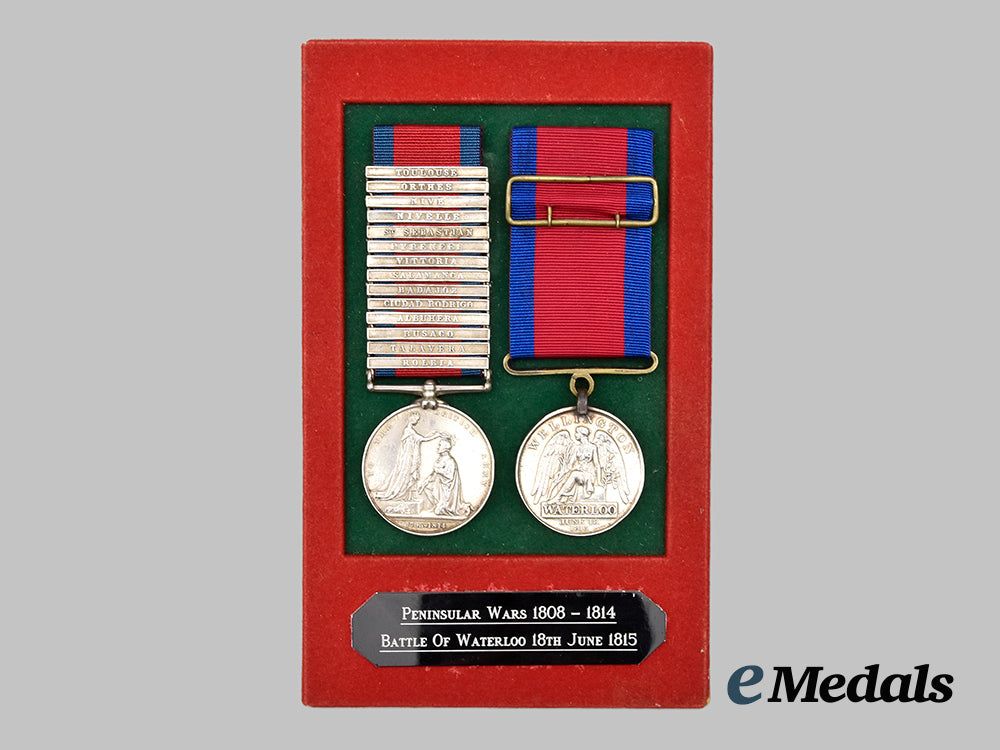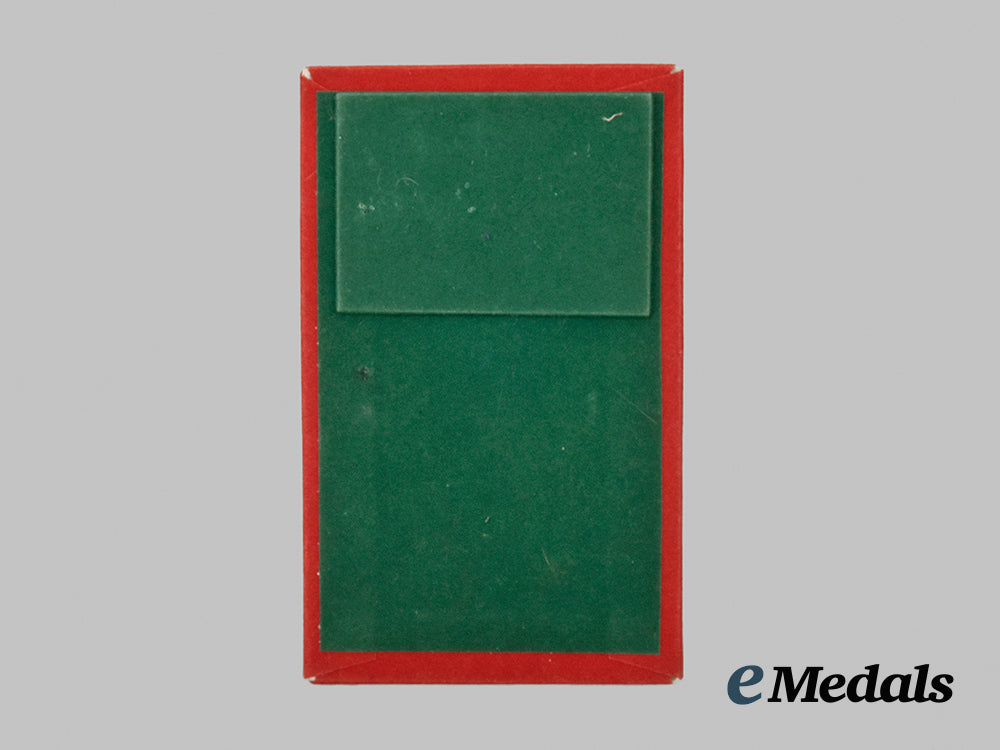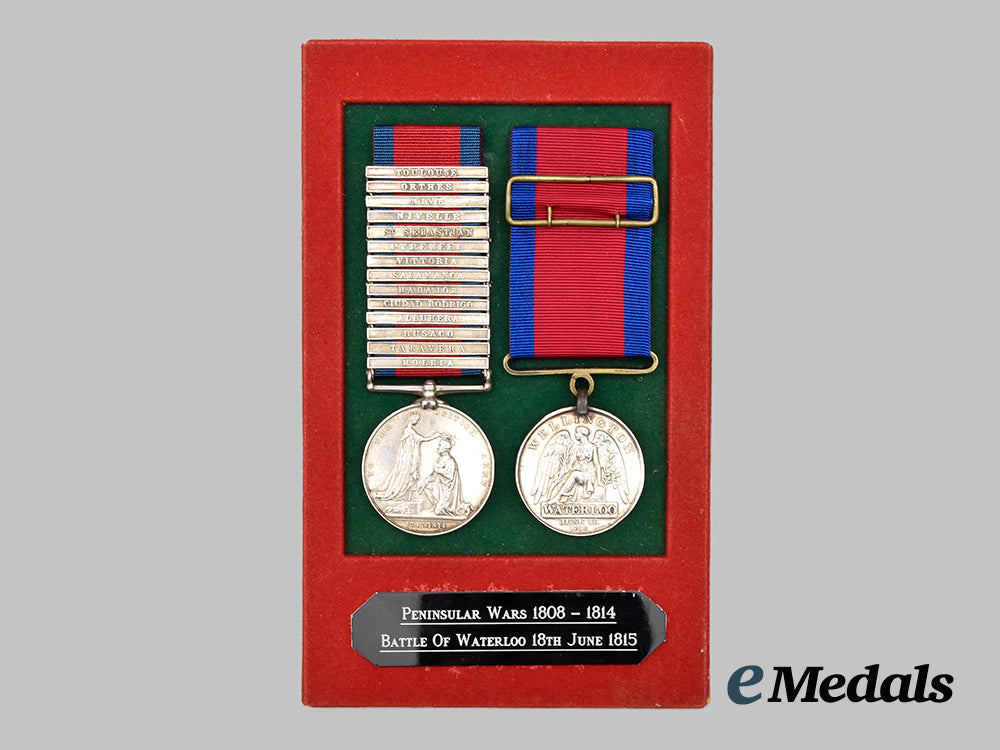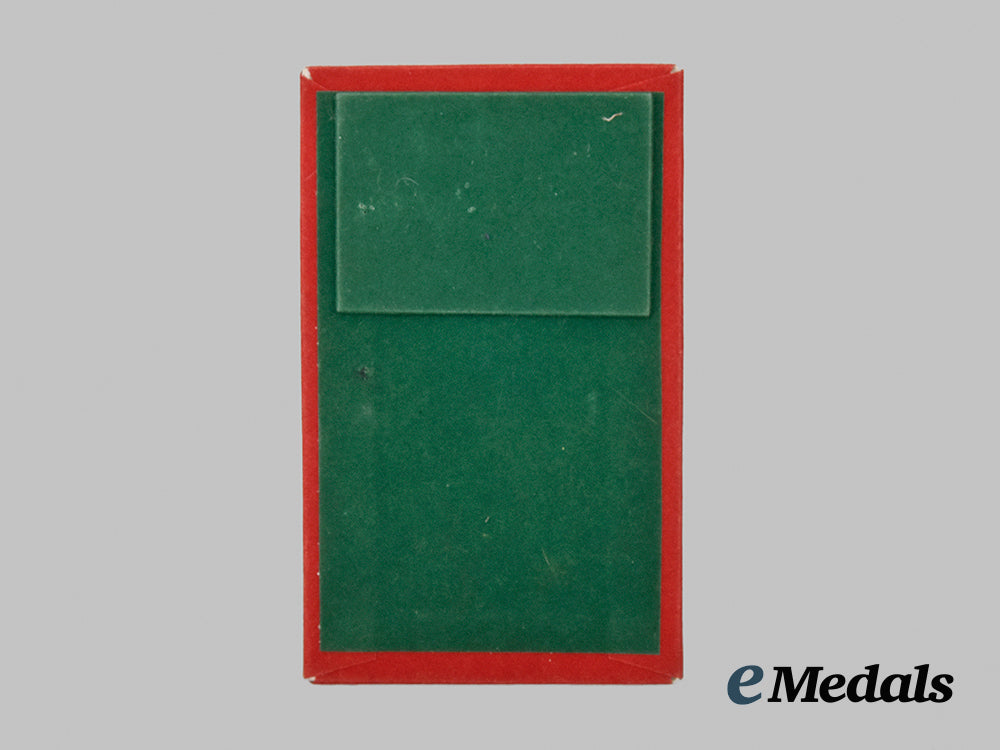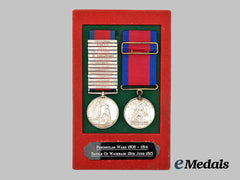
LOADING ...
In response to evolving domestic opinion, eMedals Inc has made the conscious decision to remove the presentation of German Third Reich historical artifacts from our online catalogue. For three decades, eMedals Inc has made an effort to preserve history in all its forms. As historians and researchers, we have managed sensitive articles and materials with the greatest of care and respect for their past and present social context. We acknowledge the growing sentiments put forth by the Canadian public and have taken proactive actions to address this opinion.
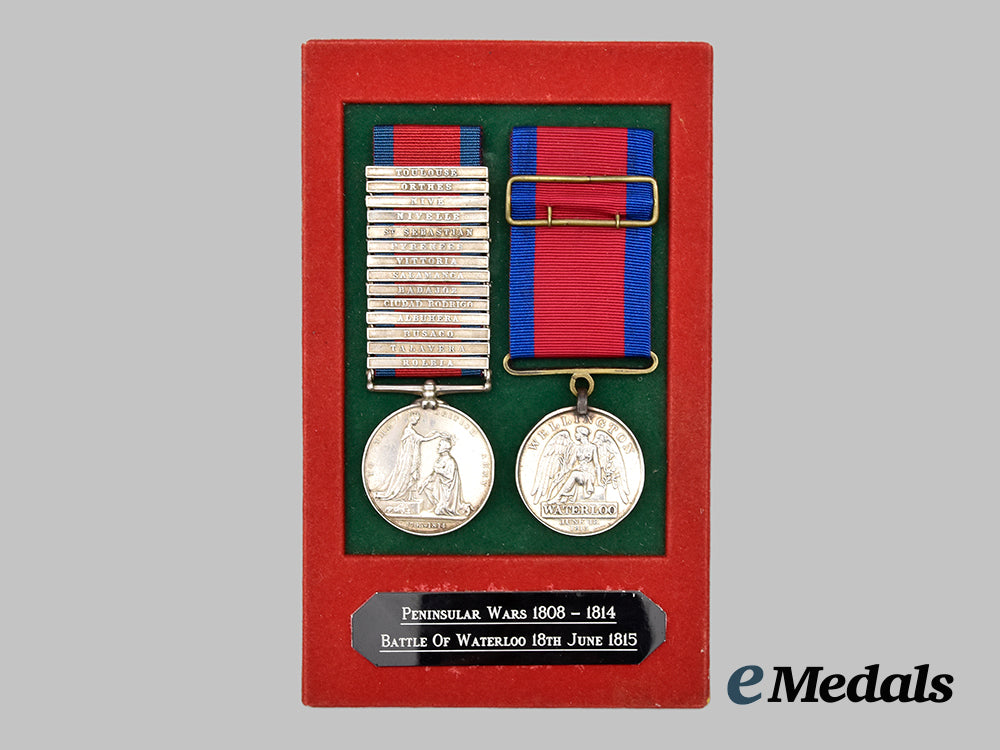
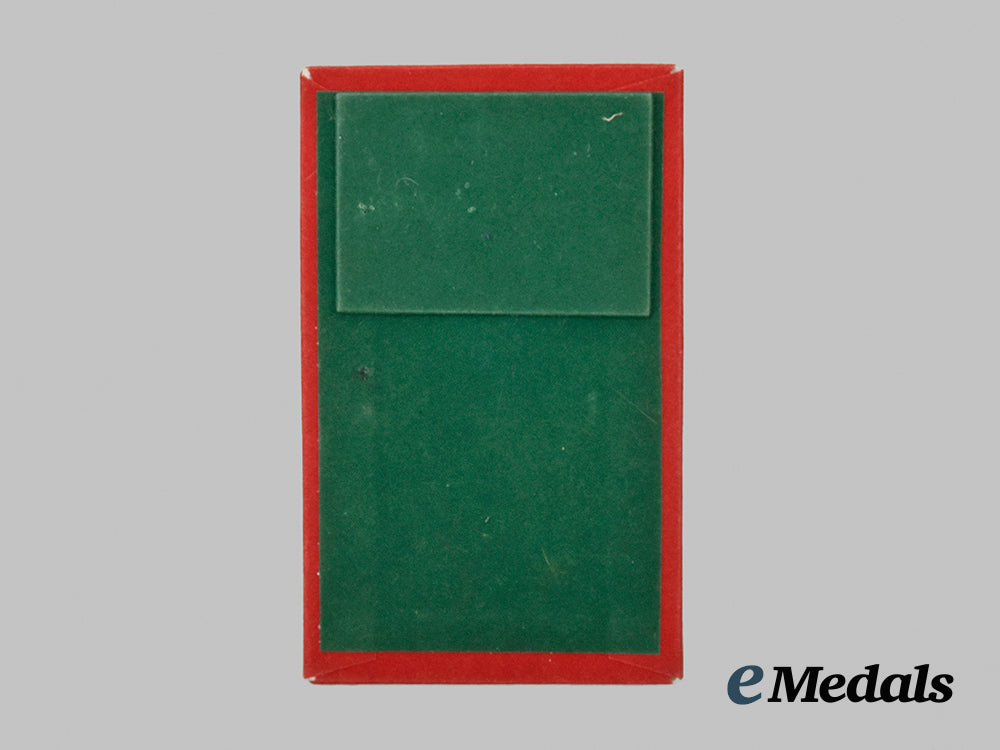
United Kingdom. A MGS and Waterloo Medal Pair Attributed to Assistant Commissary Samuel John Tibbs, Field Train Department of the Ordnance
United Kingdom. A MGS and Waterloo Medal Pair Attributed to Assistant Commissary Samuel John Tibbs, Field Train Department of the Ordnance
SKU: ITEM: GB8038
0% Buyer's Premium
Current Bid:
Your Max Bid:
Bid History:
Time Remaining:
Couldn't load pickup availability
Shipping Details
Shipping Details
eMedals offers rapid domestic and international shipping. Orders received prior to 12:00pm (EST) will be shipped on the same business day.* Orders placed on Canadian Federal holidays will be dispatched the subsequent business day. Courier tracking numbers are provided for all shipments. All items purchased from eMedals can be returned for a full monetary refund or merchandise credit, providing the criteria presented in our Terms & Conditions are met. *Please note that the addition of a COA may impact dispatch time.
Shipping Details
eMedals offers rapid domestic and international shipping. Orders received prior to 12:00pm (EST) will be shipped on the same business day.* Orders placed on Canadian Federal holidays will be dispatched the subsequent business day. Courier tracking numbers are provided for all shipments. All items purchased from eMedals can be returned for a full monetary refund or merchandise credit, providing the criteria presented in our Terms & Conditions are met. *Please note that the addition of a COA may impact dispatch time.
Description
Description
Military General Service Medal for the Peninsula Wars of 1808-1814, 14 Clasps - ROLERIA, TALAVERA, BUSACO, ALBUHERA, CIUDAD RODRIGO, BADAJOZ, SALAMANCA, VITTORIA, PYRENEES, St. SEBASTIAN, NIVELLE, NIVE, ORTHES, TOULOUSE; and Waterloo Medal. Both medals are reverse mounted, side-by-side, with the naming on both having been erased, exhibiting moderate contact marks, replacement ribbons, placed upon a forest green felt field in a recessed rectangular frame, the raised outer border of the framework in red felt and bearing a plaque inscribed "PENINSULA WARS 1808-1814 / BATTLE OF WATERLOO 18TH JUNE 1815". Better than very fine.
Footnote: Samuel J. Tibbs was commissioned on June 1, 1814, and served through the whole of the Peninsula War, and in 1848 received the medal with fourteen clasps. He also received the Waterloo medal. His name is present in the Waterloo Roll Call.
An excerpt from The Regiment, Saturday 29 August 1896, Page 326 reads:
Commissary General Samuel J. Tibbs
Before the days of the Crimean War it was not the custom to be-medal the warriors of old, or those who won their spurs under the baptism of fire, or as it has become customary so to do of late. Since Waterloo, outside India, we had no big campaigns until the Crimean War of 1854 until about June 1856, two years. In that two years campaign it was possible for an Officer to obtain the Crimean Medal, Sardinian Medal, Order of the Medjidie, Legion of Honour, Turkish Medal, etc.- five medals and orders. In this instance Commissary General Samuel J. Tibbs, Royal Artillery Field Train, only received the two war medals, Peninsula and Waterloo, with “bars” for those battles in which he was actually under fire.
The family of this old General have tried to discover, either at the Horse Guards or at the British Museum, whether any other Officer had been under fire so frequently or gained the “bars” for so many battles, but none can be traced. No other Officer who served during the Peninsula War, excepting the “Iron Duke” had the same number of bars to his Waterloo and Peninsula medals as Commissary-General Samuel J. Tibbs.
The number of battles, siege, &c., when General Tibbs was under fire we now enumerate: (1) Roleia, 17th August, 1808; (2) Talavera, (3) Busaco, (4) Albuhera, (5) Cuidad Rodrigo, (6) Badajoz, (7) Salamanca, (8) Vittoria, (9) Pyrenees, (10) St. Sebastian (siege), (11) Nivelle, (12) Nive, (13) Orthes, (14) Peninsula, (15) Quatre Bras, (16) Waterloo.
He was also at Fuentes d’Orono and at Alemeida, but there was some hitch about getting “bars” for these, as there was no one who could certify that on these occasions he had “been under fire.” After a certain battle General Tibbs was recommended for a promotion to the Commander-in-Chief by Sir Alexander Dickson, then commanding the Royal Artillery. The photo of the old warrior here reproduced, has been given to the Officer’s mess, Royal Artillery, and Royal Artillery Institute, Woolwich.
During the Peninsula War, the subject of this sketch was in commande of an ammunition convoy to the front, with the late Duke of Wellington. The Duke of Wellington has received complaints from the Spaniarts and Portugese [sic], that certain troops had entered the country churches and chapels, and committed scarilege [sic] therein. On hearing this the Duke of Wellington issued stringent orders that under no consideration or excuse were troops to again enter the churches and chapels, except for the purpose for which they were built, and that he would most assuredly hang the next offender, or offenders. During the march when Commissary-General Tibb was in charge of the above- mentioned convoy, consisting of much ammunition and several guns for the army at Salamanca, a violent thunderstorm overtook the convoy, and the only building or shelter of any description near them was a wayside country chapel. The Commander of the convoy pondered for a moment over the matter and thought “If I obey orders the ammunition will be ruined and useless. Better be hanged than run the risk of the troops falling short of ammunition,” and forthwith told the stories under his command to break over the chapel door. Thus the ammunition was stored in safety.
When the storm abated, the gallant old warrior resumed his march with dry and serviceable ammunition. He duly arrived at the Duke’s headquarters; reported arrival and so forth ; but in the meantime some of the country people found out the convoy with ammunition had broken open their chapel door, and hurried to headquarters and lodged the complaint.
The Duke, on hearing the report, was furious, and demanded who was the Officer that had command of the convoy and disobeyed his orders, adding, “I will assuredly hang him.” Fortunately for General Tibbs he had a personal friend on the Duke’s staff, who, on hearing the threat, hurried to him and said, “Sam, go back at once; as the Commander in Chief swears he will hang your for your disobedience of orders and desecrating that chapel.”
When Wellington learnt who the officer was, he told the Staff Officer to bring him before him. To which Tibbs’s friend replied, “I have sent him back on some other duty, my Lord.” After this incident the Staff Officer talked to Lord Wellington (as he then was) and reasoned with him, that the circumstances were exceptional, and that if the Officer in command of the convoy had not used his own discretion the whole of the ammunition would have been ruined and useless, and the impending battle lost i.e., the battle of Salamanca. The Duke of Wellington saw reason in this argument and allowed his anger to cool down, and never again made any allusion to this case of “disobedience of orders.” Commissary-General Tibbs managed, however, to get back in time to take part in the battle of Salamanca, and Salamanca is one of the clasps of his famous medal. It may be interesting to mention that the late Commissary-General Tibbs’s friend on the Duke’s Staff was the late Lord Raglan, who commanded the troops in Crimea.
Such a glorious record of war service ought not to be lost sight of, and shall emulate those who are so fortunate as to be still in the grand and glorious old Army of the best Queen whoever sat on England’s throne. The medals and uniform of the late Commissary-General Samuel J. Tibbs, Royal Artillery Field Train, are in the possession of his son, who is a clergyman of the Church of England.
Provenance: Dixons August 2006
Description
Military General Service Medal for the Peninsula Wars of 1808-1814, 14 Clasps - ROLERIA, TALAVERA, BUSACO, ALBUHERA, CIUDAD RODRIGO, BADAJOZ, SALAMANCA, VITTORIA, PYRENEES, St. SEBASTIAN, NIVELLE, NIVE, ORTHES, TOULOUSE; and Waterloo Medal. Both medals are reverse mounted, side-by-side, with the naming on both having been erased, exhibiting moderate contact marks, replacement ribbons, placed upon a forest green felt field in a recessed rectangular frame, the raised outer border of the framework in red felt and bearing a plaque inscribed "PENINSULA WARS 1808-1814 / BATTLE OF WATERLOO 18TH JUNE 1815". Better than very fine.
Footnote: Samuel J. Tibbs was commissioned on June 1, 1814, and served through the whole of the Peninsula War, and in 1848 received the medal with fourteen clasps. He also received the Waterloo medal. His name is present in the Waterloo Roll Call.
An excerpt from The Regiment, Saturday 29 August 1896, Page 326 reads:
Commissary General Samuel J. Tibbs
Before the days of the Crimean War it was not the custom to be-medal the warriors of old, or those who won their spurs under the baptism of fire, or as it has become customary so to do of late. Since Waterloo, outside India, we had no big campaigns until the Crimean War of 1854 until about June 1856, two years. In that two years campaign it was possible for an Officer to obtain the Crimean Medal, Sardinian Medal, Order of the Medjidie, Legion of Honour, Turkish Medal, etc.- five medals and orders. In this instance Commissary General Samuel J. Tibbs, Royal Artillery Field Train, only received the two war medals, Peninsula and Waterloo, with “bars” for those battles in which he was actually under fire.
The family of this old General have tried to discover, either at the Horse Guards or at the British Museum, whether any other Officer had been under fire so frequently or gained the “bars” for so many battles, but none can be traced. No other Officer who served during the Peninsula War, excepting the “Iron Duke” had the same number of bars to his Waterloo and Peninsula medals as Commissary-General Samuel J. Tibbs.
The number of battles, siege, &c., when General Tibbs was under fire we now enumerate: (1) Roleia, 17th August, 1808; (2) Talavera, (3) Busaco, (4) Albuhera, (5) Cuidad Rodrigo, (6) Badajoz, (7) Salamanca, (8) Vittoria, (9) Pyrenees, (10) St. Sebastian (siege), (11) Nivelle, (12) Nive, (13) Orthes, (14) Peninsula, (15) Quatre Bras, (16) Waterloo.
He was also at Fuentes d’Orono and at Alemeida, but there was some hitch about getting “bars” for these, as there was no one who could certify that on these occasions he had “been under fire.” After a certain battle General Tibbs was recommended for a promotion to the Commander-in-Chief by Sir Alexander Dickson, then commanding the Royal Artillery. The photo of the old warrior here reproduced, has been given to the Officer’s mess, Royal Artillery, and Royal Artillery Institute, Woolwich.
During the Peninsula War, the subject of this sketch was in commande of an ammunition convoy to the front, with the late Duke of Wellington. The Duke of Wellington has received complaints from the Spaniarts and Portugese [sic], that certain troops had entered the country churches and chapels, and committed scarilege [sic] therein. On hearing this the Duke of Wellington issued stringent orders that under no consideration or excuse were troops to again enter the churches and chapels, except for the purpose for which they were built, and that he would most assuredly hang the next offender, or offenders. During the march when Commissary-General Tibb was in charge of the above- mentioned convoy, consisting of much ammunition and several guns for the army at Salamanca, a violent thunderstorm overtook the convoy, and the only building or shelter of any description near them was a wayside country chapel. The Commander of the convoy pondered for a moment over the matter and thought “If I obey orders the ammunition will be ruined and useless. Better be hanged than run the risk of the troops falling short of ammunition,” and forthwith told the stories under his command to break over the chapel door. Thus the ammunition was stored in safety.
When the storm abated, the gallant old warrior resumed his march with dry and serviceable ammunition. He duly arrived at the Duke’s headquarters; reported arrival and so forth ; but in the meantime some of the country people found out the convoy with ammunition had broken open their chapel door, and hurried to headquarters and lodged the complaint.
The Duke, on hearing the report, was furious, and demanded who was the Officer that had command of the convoy and disobeyed his orders, adding, “I will assuredly hang him.” Fortunately for General Tibbs he had a personal friend on the Duke’s staff, who, on hearing the threat, hurried to him and said, “Sam, go back at once; as the Commander in Chief swears he will hang your for your disobedience of orders and desecrating that chapel.”
When Wellington learnt who the officer was, he told the Staff Officer to bring him before him. To which Tibbs’s friend replied, “I have sent him back on some other duty, my Lord.” After this incident the Staff Officer talked to Lord Wellington (as he then was) and reasoned with him, that the circumstances were exceptional, and that if the Officer in command of the convoy had not used his own discretion the whole of the ammunition would have been ruined and useless, and the impending battle lost i.e., the battle of Salamanca. The Duke of Wellington saw reason in this argument and allowed his anger to cool down, and never again made any allusion to this case of “disobedience of orders.” Commissary-General Tibbs managed, however, to get back in time to take part in the battle of Salamanca, and Salamanca is one of the clasps of his famous medal. It may be interesting to mention that the late Commissary-General Tibbs’s friend on the Duke’s Staff was the late Lord Raglan, who commanded the troops in Crimea.
Such a glorious record of war service ought not to be lost sight of, and shall emulate those who are so fortunate as to be still in the grand and glorious old Army of the best Queen whoever sat on England’s throne. The medals and uniform of the late Commissary-General Samuel J. Tibbs, Royal Artillery Field Train, are in the possession of his son, who is a clergyman of the Church of England.
Provenance: Dixons August 2006
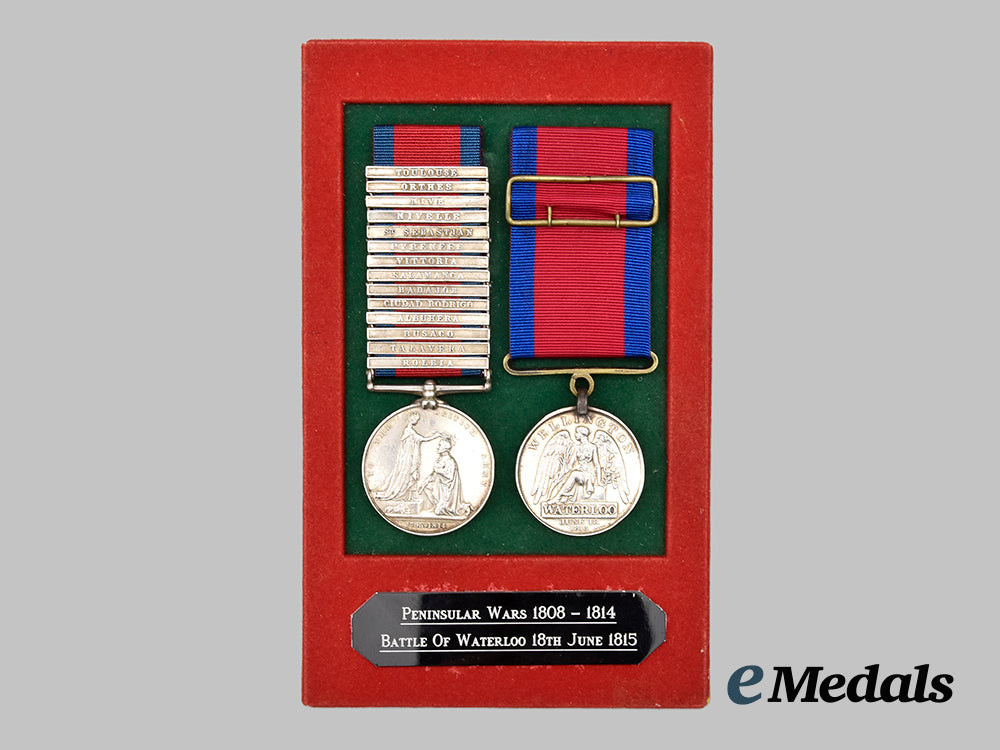
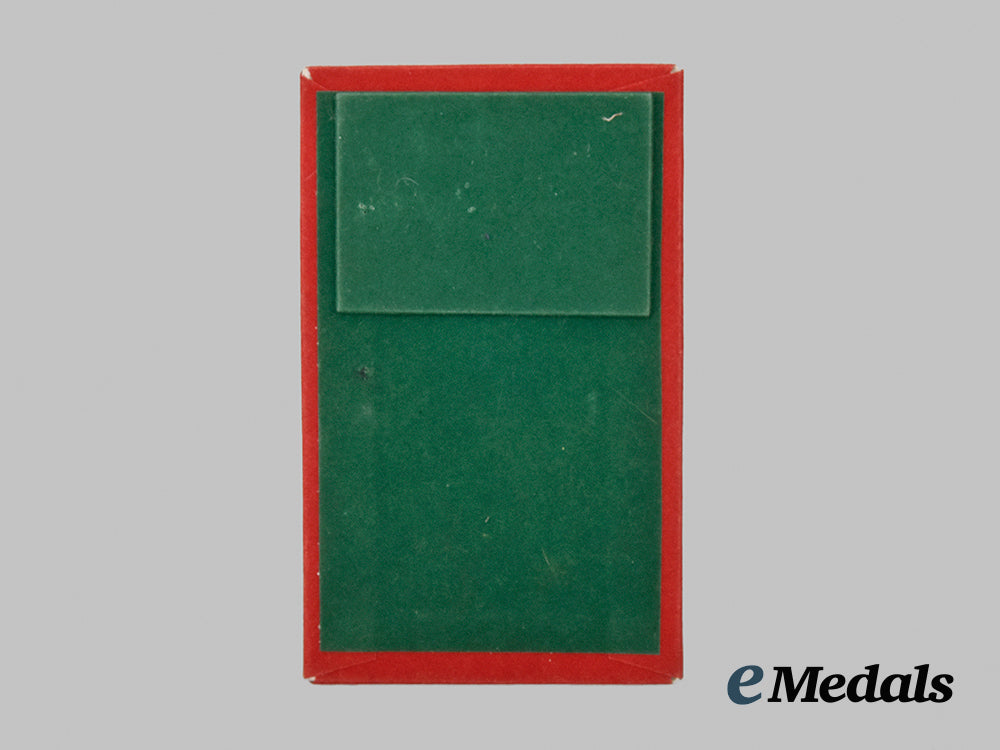
You May Also Like
Canada, Australia, India, United Kingdom. A Lot Of Six Second War Medals
GB7513
Germany, Luftwaffe. A Central Petroleum Department Stamp
G52889
Germany, Third Reich. A Mixed Lot of Third Reich Organizational Membership Cards and Booklets
G59003
Germany, Third Reich. A Mixed Lot of Patriotic and Social Welfare Postcards
G59002
Germany, Wehrmacht. A Mixed Lot of Illustrated Postcards
G59001
-
Canada, Australia, India, United Kingdom. A Lot Of Six Second War Medals
GB7513
Add to CartRegular price $135 USDRegular price $0 USD Sale price $135 USDUnit price / per -
Germany, Luftwaffe. A Central Petroleum Department Stamp
G52889
Add to CartRegular price $340 USDRegular price $0 USD Sale price $340 USDUnit price / per -
Germany, Third Reich. A Mixed Lot of Third Reich Organizational Membership Cards and Booklets
G59003
Add to CartRegular price $200 USDRegular price $0 USD Sale price $200 USDUnit price / per -
Germany, Third Reich. A Mixed Lot of Patriotic and Social Welfare Postcards
G59002
Add to CartRegular price $200 USDRegular price $0 USD Sale price $200 USDUnit price / per -
Germany, Wehrmacht. A Mixed Lot of Illustrated Postcards
G59001
Add to CartRegular price $200 USDRegular price $0 USD Sale price $200 USDUnit price / per
Do you have a similar item you are interested in selling?
Please complete the form and our client care representatives will contact you.
Sell Item